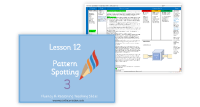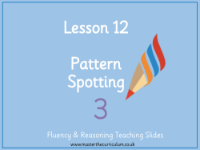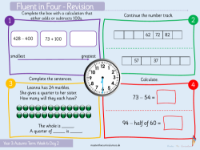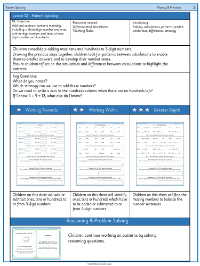Addition and subtraction - Pattern spotting - Planning
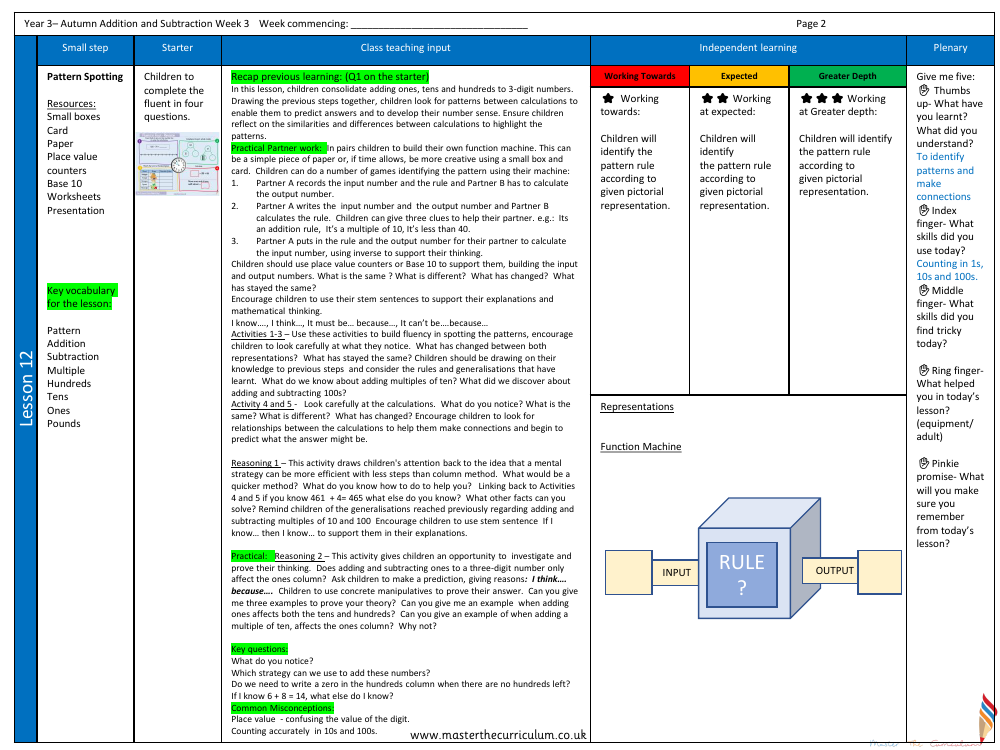
Maths Resource Description
In Year 3, during the Autumn term's third week of Addition and Subtraction, students delve into the concept of 'Pattern Spotting'. The lesson is structured with a starter activity, followed by class teaching input, independent learning, and a concluding plenary. A variety of resources are employed, including small boxes, card, paper, place value counters, Base 10 equipment, worksheets, and a presentation. Key vocabulary such as 'pattern', 'addition', 'subtraction', 'multiple', 'hundreds', 'tens', 'ones', and 'pounds' is introduced to aid understanding. The goal is to consolidate the children's ability to add ones, tens, and hundreds to three-digit numbers and to enhance their number sense by identifying patterns in calculations. Practical partner work includes creating a function machine, which can be as simple as a piece of paper or a small box and card, to facilitate games that reinforce pattern recognition and the use of inverse operations.
During independent learning, children engage in various activities designed to build fluency in spotting patterns and understanding the relationships between calculations. They are encouraged to articulate their mathematical thinking through stem sentences such as "I know...", "I think...", "It must be... because...", and "It can't be... because...". Reasoning tasks further challenge the students to consider the efficiency of mental strategies over column methods and to investigate how adding or subtracting ones to a three-digit number affects the ones, tens, and hundreds columns. The lesson aims to clarify common misconceptions around place value and counting accurately in tens and hundreds. The 'Give me five' reflection activity prompts students to consider what they have learned, the skills they have used, and what they found challenging, as well as what helped them and what they will remember from the lesson. Different levels of achievement are acknowledged, from 'working towards' to 'working at greater depth', where children will identify the pattern rule according to given pictorial representations.
